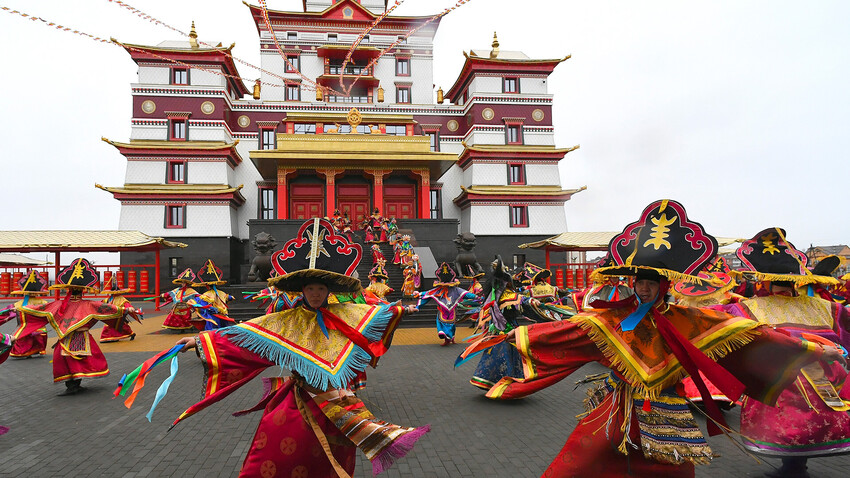
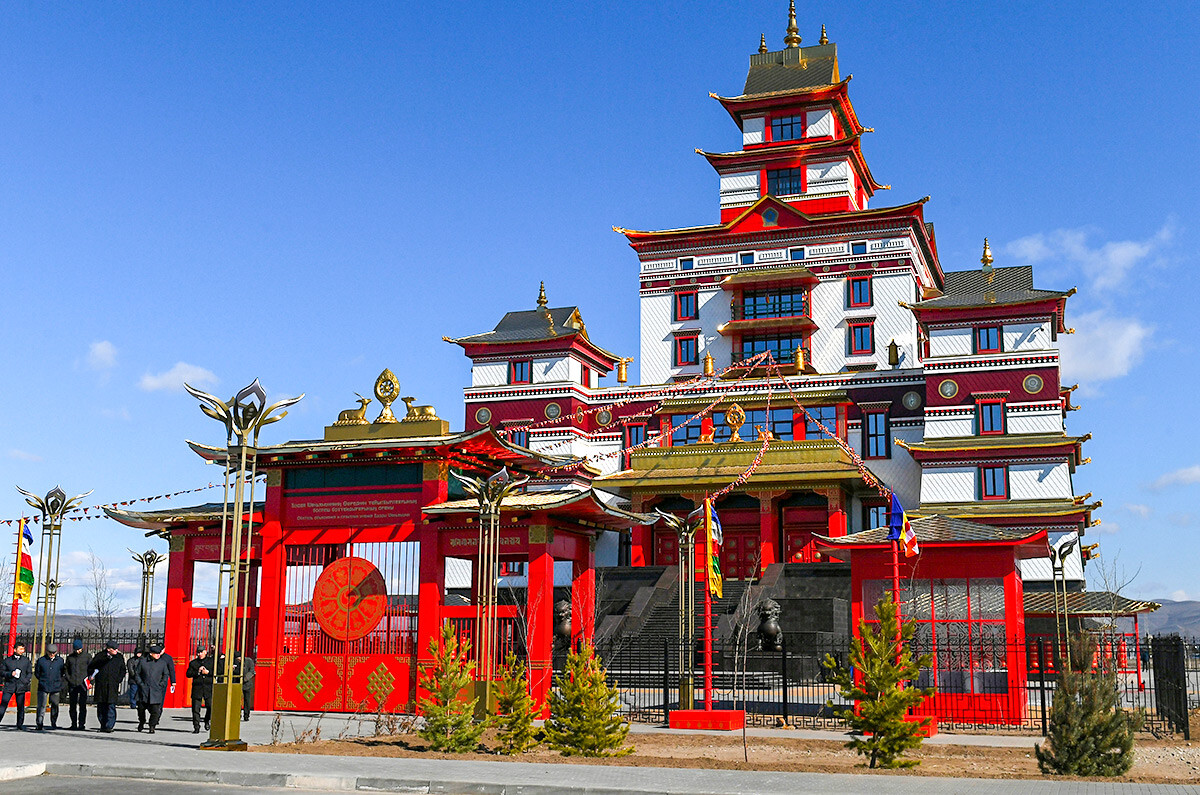
In Russia, about 1.5-2 million people identify themselves as Buddhists, with most of them practicing Tibetan-Mongolian Buddhism. This religion is mostly practiced in such regions of Russia as the republics of Buryatia, Kalmykia, Altai, Tuva and Zabaikalsky (Trans-Baikal) Territory.
Until the early 20th century, the territory of Tuva Republic was part of Mongolia, so, historically, Buddhism was widespread there. In the 20th century, several local princes asked to submit to the protectorate of Russia. Later, with the help of the Soviet Union, the independent Tuvan People's Republic was formed. During World War II, the Tuvinians actively supported the USSR, fought against Hitler and supplied horses, cattle and food. And, in 1944, Tuva became part of the Russian Soviet Republic on the rights of autonomy.
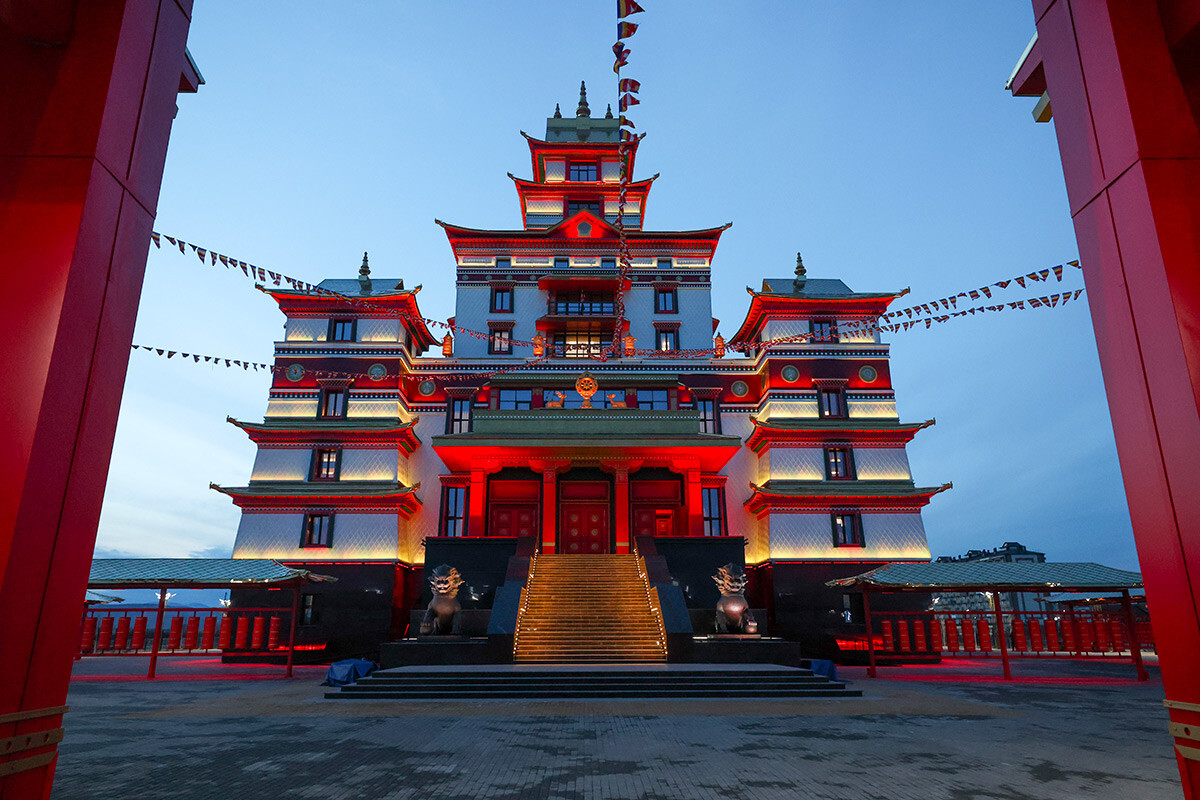
In the 1920s, Tuva had 19 Buddhist monasteries and about 3,000 'lamas' (spiritual teachers). Despite formal independence, Tuva was actually under the control of the USSR and, in the 1930s, there was also mass purge and fight against religion. All temples were closed and Buddhists were persecuted.
Today, about 60 percent of Tuva's population professes Buddhism and the republic elects its own spiritual leader, called ‘Kamby’ or ‘Supreme’, Lama of Tuva. The Buddhist community was reawakened after the USSR's collapse. In 1998, in the capital city of Kyzyl, the snow-white ‘Tsechenling’ temple was built, which became a place of attraction for believers.
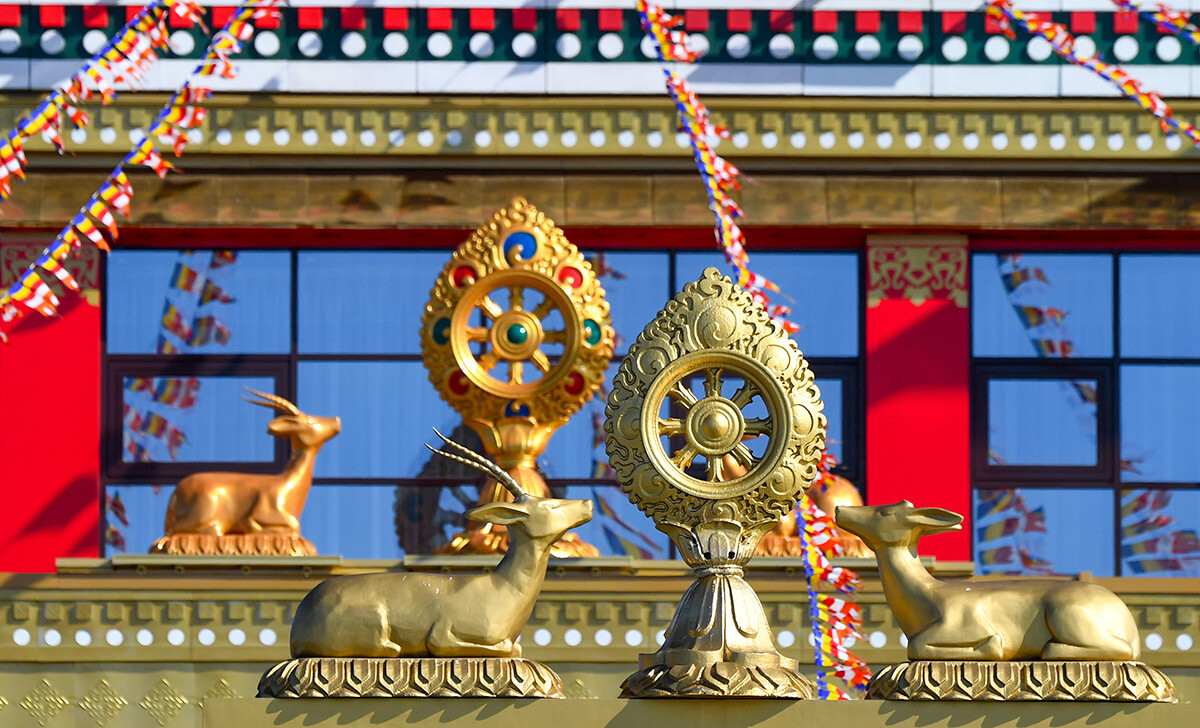
And, in April 2023, a new datsan (this is how Russian Buddhists call 'monastery’ and ‘university') — ‘Tubten Shedrub Ling’ — was solemnly consecrated and opened in the city of Kyzyl.
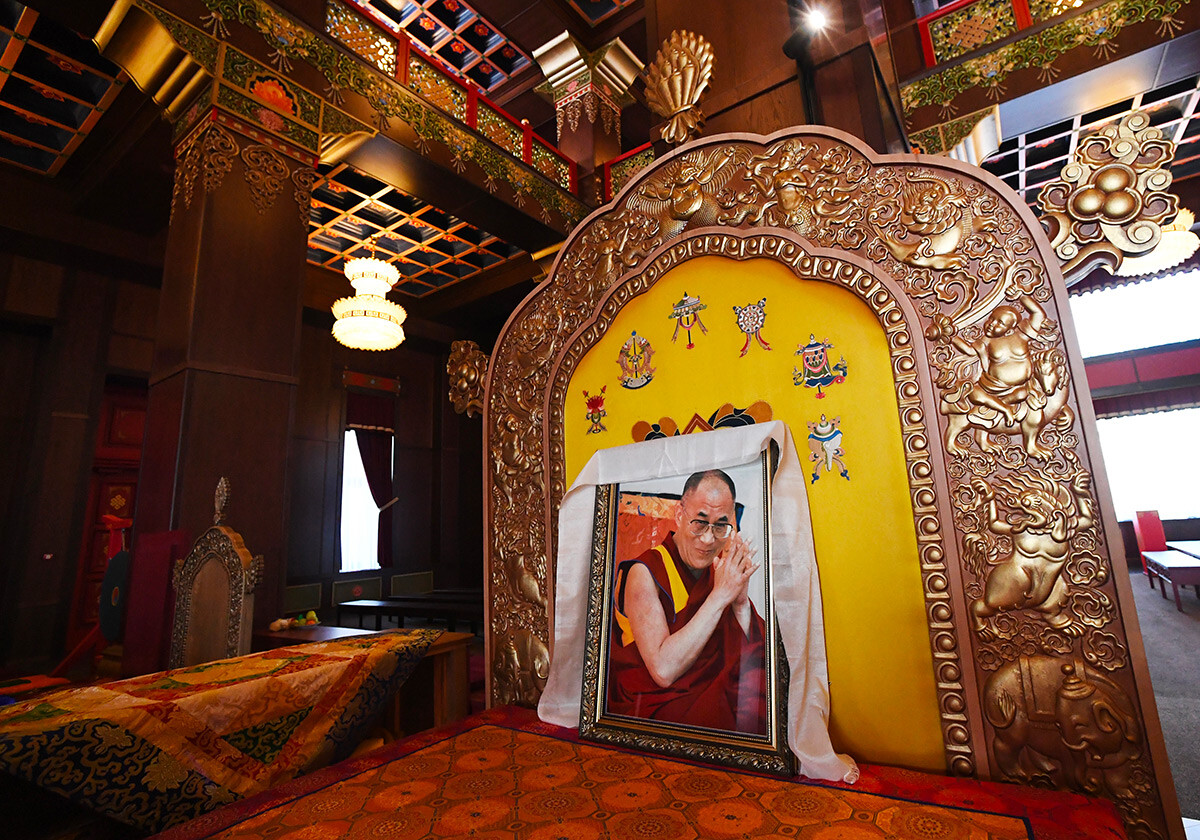
The monastery began to be built back in 2014, but the place was chosen over 30 years ago. In 1992, Tenzin Gyatso, the 14th Dalai Lama, paid a visit to Tuva to celebrate the revival of the local Buddhism. He blessed the place for the construction of the future monastery. But, the construction was postponed for various reasons.
In 2022, a delegation from Tuva visited the residence of the Dalai Lama in India and His Holiness took the monastery under his patronage. He appointed a spiritual protector for the monastery, the Six-armed Mahakala, and presented a meter-long statue of this Buddhist deity, made of copper and gilded by Nepalese craftsmen (The statue is hidden from public view).
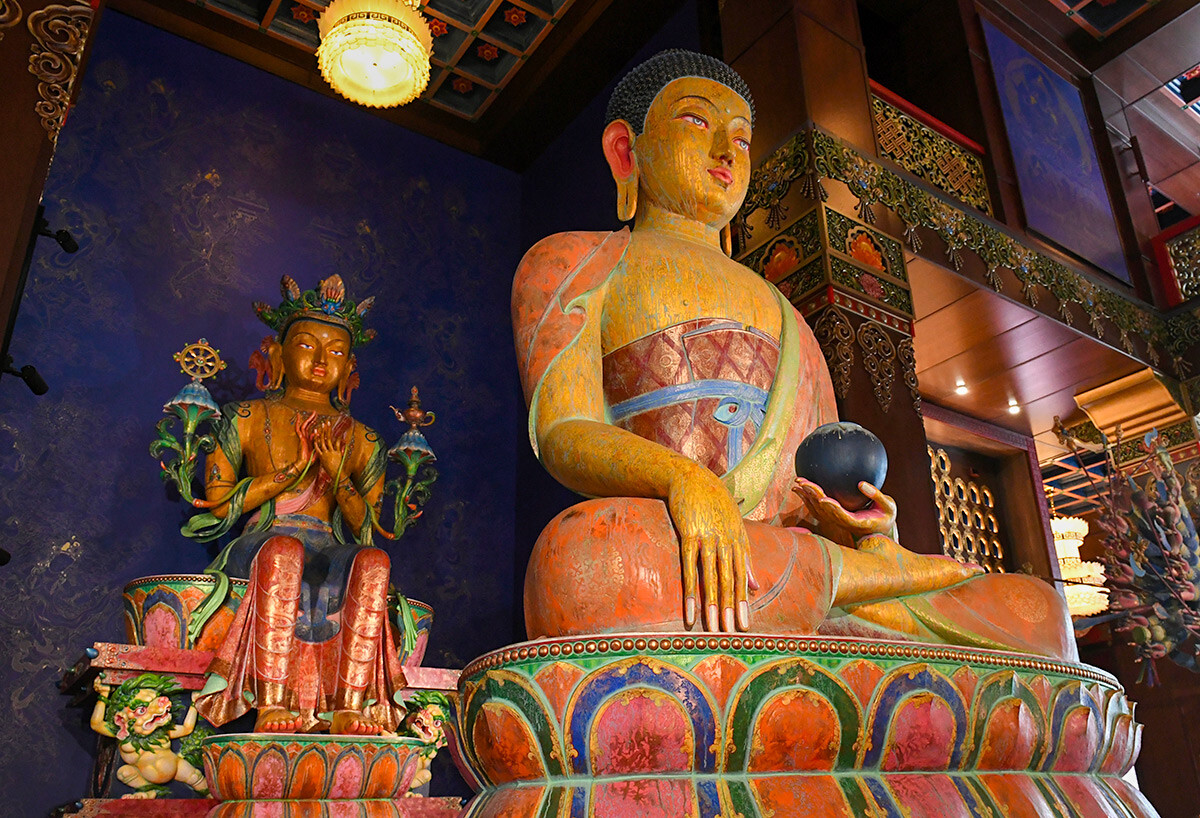
The Dalai Lama also gave the name ‘Tubten Shedrub Ling’ to the monastery, which translates as “The Abode of Explanation and Practice of the Teachings of Shakyamuni Buddha”. And for good reason.
In addition to the Mahakala statue, the Dalai Lama presented the monastery with several Buddhist relics, including his own monastic robes and sacred texts. One of the gifts was some of Buddha's ashes. During the monastery's grand opening, it was ceremonially placed inside the statue of Buddha.
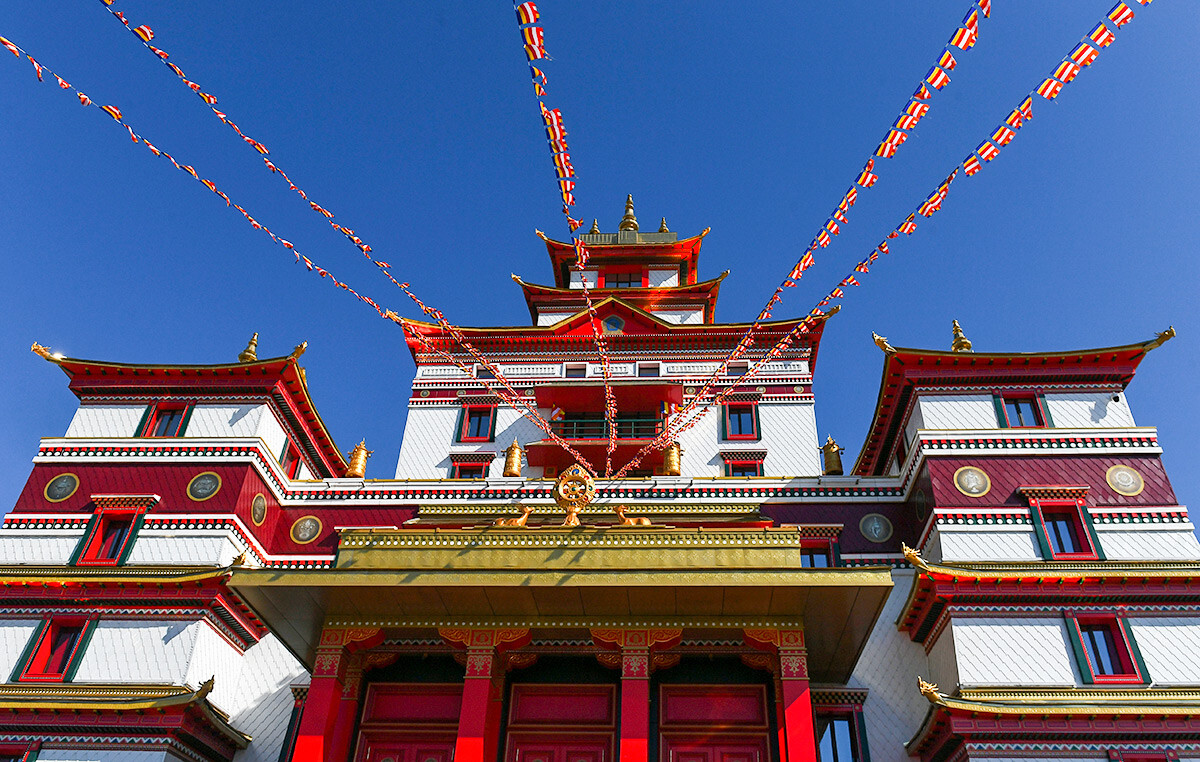
The temple complex covers an area of 9.3 hectares (almost four full-sized soccer fields). There are plans to build a dormitory for monks, a theology education center, as well as a center of traditional medicine in the monastery.
The height of the 12-storey temple is 56 meters. The first storey houses an exhibition of the most important artifacts in the history of Tuva and Buddhism in the region. In the prayer hall, there are statues of deities made by famous Russian sculptor Dashi Namdakov. A 10-meter statue of Buddha, meanwhile, crowns the composition.
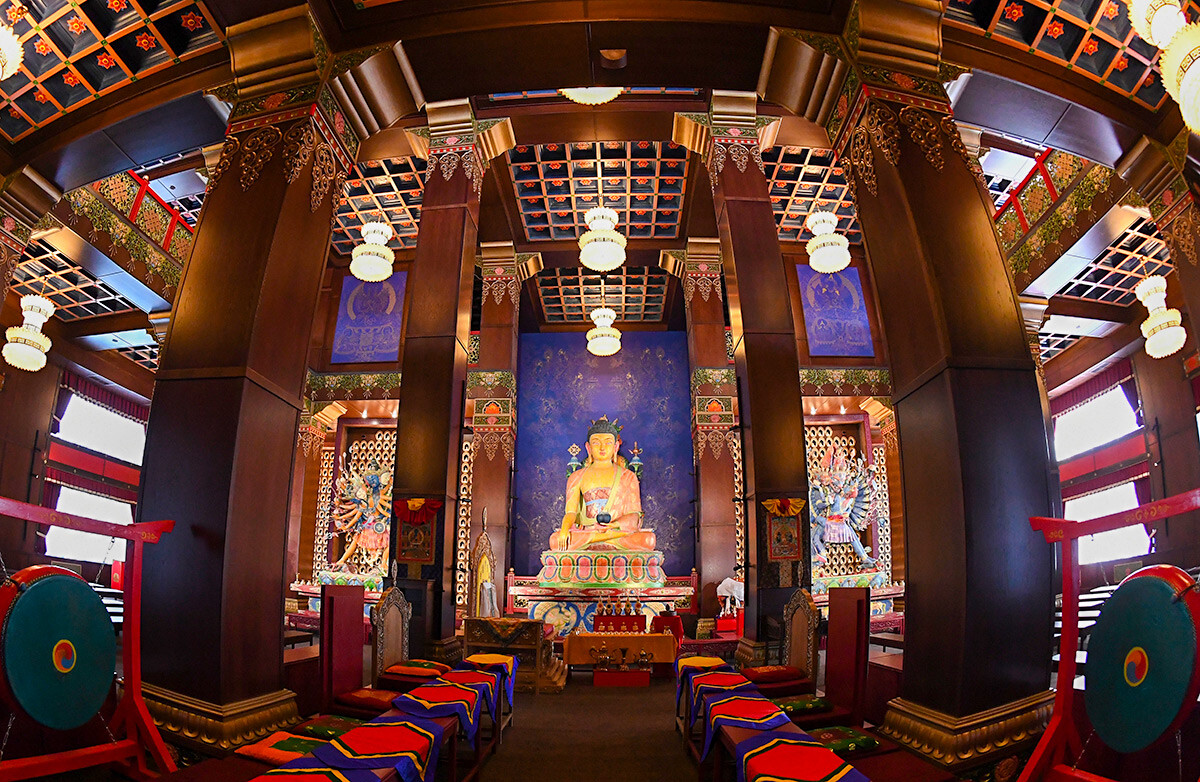
The construction of the temple was inspired by the traditions of Buddhist architecture in Russia, as well as by foreign examples. It resembles both the Lama's Palace and the Buddhist Institute in Tibet.
Dear readers,
Our website and social media accounts are under threat of being restricted or banned, due to the current circumstances. So, to keep up with our latest content, simply do the following:
If using any of Russia Beyond's content, partly or in full, always provide an active hyperlink to the original material.
Subscribe
to our newsletter!
Get the week's best stories straight to your inbox